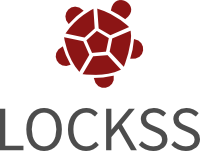Current Control in Field-Excited Flux Switching Machines: No-Load Induced Voltage Impact Based on the Winding Connection
DOI:
https://doi.org/10.18618/REP.e202515Keywords:
Would-field flux-switching machine, in-wheel drives, hybrid electric vehicles, independent field current controlAbstract
Micro and mild hybrid electric vehicles can make a significant contribution to reducing emissions and mitigating the environmental impact. Electric machine designs with fewer or no rare-earth permanent magnets will play an important role in the adoption of hybrid solutions. Doubly salient reluctance machines exhibit a simple structure, robust mechanical strength, excellent fault tolerance, and a wide range of speed regulation, which makes them suitable for in-wheel applications. Particular emphasis should be placed on flux-switching machines with wound-field excitation, which offer great operating flexibility, efficient heat dissipation, and power density of up to 4.8 kW/kg. This paper introduces a wound-field flux-switching machine designed for in-wheel applications, featuring individual field current control. The machine has individual access to each of the field coils. The primary objective of this research is to enhance the machine's operational versatility by enabling multiple configurations of the machine, adjusting the way the field-coils are connected. Firstly, a comparison of the armature no-load induced voltage is made for field coils connected in both series and parallel. Additionally, an assessment of the impact of open-circuit failures in one and two adjacent field coils is conducted. Finally, a current control strategy is proposed to effectively manage each individual field coil.
Downloads
References
A. C. T. Malaquias, N. A. D. Netto, F. A. R. Filho, R. B. R. da Costa, M. Langeani, J. G. C. Baeta, “The misleading total re- ˆ placement of internal combustion engines by electric motors and a study of the Brazilian ethanol importance for the sustainable future of mobility: a review”, Journal of the Brazilian Society of Mechanical Sciences and Engineering, vol. 41, pp. 1–23, 2019. DOI: https://doi.org/10.1007/s40430-019-2076-1
S. Nalley, A. LaRose, “Annual energy outlook 2022 (AEO2022)”, Energy Information Agency, vol. 23, 2022.
L. Lesnik, B. Kegl, E. Torres-Jim enez, F. Cruz-Perag ´ on, “Why ´ we should invest further in the development of internal combustion engines for road applications”, Oil & Gas Science and Technology–Revue d’IFP Energies nouvelles, vol. 75, p. 56, 2020. DOI: https://doi.org/10.2516/ogst/2020051
C. L. K. Yamamura, H. Takiya, C. A. S. Machado, J. C. C. Santana, J. A. Quintanilha, F. T. Berssaneti, “Electric cars in Brazil: An analysis of core green technologies and the transition process”, Sustainability, vol. 14, no. 10, p. 6064, 2022. DOI: https://doi.org/10.3390/su14106064
H. Pan, L. Qi, Z. Zhang, J. Yan, “Kinetic energy harvesting technologies for applications in land transportation: A comprehensive review”, Applied Energy, vol. 286, p. 116518, 2021. DOI: https://doi.org/10.1016/j.apenergy.2021.116518
Y. Zhu, H. Wu, J. Zhang, “Regenerative braking control strategy for electric vehicles based on optimization of switched reluctance generator drive system”, IEEE Access, vol. 8, pp. 76671–76682, 2020. DOI: https://doi.org/10.1109/ACCESS.2020.2990349
P. Dukalski, R. Krok, “Selected Aspects of Decreasing Weight of Motor Dedicated to Wheel Hub Assembly by Increasing Number of Magnetic Poles”, Energies, vol. 14, no. 4, p. 917, 2021. DOI: https://doi.org/10.3390/en14040917
Y. Wang, N. Bianchi, R. Qu, “Comparative study of non-rare-earth and rare-earth PM motors for EV applications”, Energies, vol. 15, no. 8, p. 2711, 2022. DOI: https://doi.org/10.3390/en15082711
Y. Zhao, C. Lu, D. Li, X. Zhao, F. Yang, “Overview of the optimal design of the electrically excited doubly salient variable reluctance machine”, Energies, vol. 15, no. 1, p. 228, 2021. DOI: https://doi.org/10.3390/en15010228
H. Cheng, J. Zhou, Q. Hu, J. Sun, D. Yu, “General Analysis and Vector Control for Doubly Salient Reluctance Machines”, IEEE Transactions on Power Electronics, 2023. DOI: https://doi.org/10.1109/TPEL.2023.3294604
Z. Liu, K. Wang, B. Zhou, “Fault-tolerant operation of DC-field excited modular variable flux reluctance machine under open-circuit faults”, IEEE Transactions on Industrial Electronics, vol. 69, no. 11, pp. 10834–10845, 2021. DOI: https://doi.org/10.1109/TIE.2021.3118383
M. Yousuf, F. Khan, B. Ullah, “Electromagnetic performance of five phase non-overlapping stator wound field flux switching machine”, Journal of Electrical Engineering & Technology, pp. 1–10.
S.-M. Yang, J.-H. Zhang, J.-Y. Jiang, “Modeling torque characteristics and maximum torque control of a three-phase, dc-excited fluxswitching machine”, IEEE Transactions on Magnetics, vol. 52, no. 7, pp. 1–4, 2016. DOI: https://doi.org/10.1109/TMAG.2016.2526620
B. Wu, D. Xu, J. Ji, W. Zhao, Q. Jiang, “Field-oriented control and direct torque control for a five-phase fault-tolerant flux-switching permanent-magnet motor”, Chinese Journal of Electrical Engineering, vol. 4, no. 4, pp. 48–56, 2018. DOI: https://doi.org/10.23919/CJEE.2018.8606789
W. Jiang, W. Huang, X. Lin, Y. Zhao, X. Wu, Y. Zhao, D. Dong, X. Jiang, “A novel stator wound field flux switching machine with the combination of overlapping armature winding and asymmetric stator poles”, IEEE Transactions on Industrial Electronics, vol. 69, no. 3, pp. 2737–2748, 2021. DOI: https://doi.org/10.1109/TIE.2021.3063955
S. Akbar, F. Khan, W. Ullah, B. Ullah, M. Yousuf, S. Hussain, “Comparative Study of Outer Rotor Field Excited Flux Switching Machine with Feasible Rotor Poles For EV and HEV Application”, in 2022 International Conference on Technology and Policy in Energy and Electric Power (ICT-PEP), pp. 174–179, IEEE, 2022. DOI: https://doi.org/10.1109/ICT-PEP57242.2022.9988789
B. Ullah, F. Khan, A. H. Milyani, “Analysis of a discrete stator hybrid excited flux switching linear machine”, IEEE Access, vol. 10, pp. 8140–8150, 2022. DOI: https://doi.org/10.1109/ACCESS.2022.3143794
Z. Xiang, Z. Lu, X. Zhu, M. Jiang, D. Fan, L. Quan, “Research on magnetic coupling characteristic of a double rotor flux-switching PM machine from the perspective of air-gap harmonic groups”, IEEE Transactions on Industrial Electronics, vol. 69, no. 12, pp. 12551– 12563, 2022. DOI: https://doi.org/10.1109/TIE.2021.3139182
J. Chu, H. Cheng, J. Sun, C. Peng, Y. Hu, “Multi-objective optimization design of hybrid excitation double stator permanent magnet synchronous machine”, IEEE Transactions on Energy Conversion, vol. 38, no. 4, pp. 2364–2375, 2023. DOI: https://doi.org/10.1109/TEC.2023.3279934
D. P. V. Galo, T. A. C. Maia, B. de Jesus Cardoso Filho, “Independent Field Excitation Control of an In-Wheel Wound-Field Flux Switching Machine for Micro-Hybrid Applications”, in 2023 IEEE 8th Southern Power Electronics Conference (SPEC), pp. 1–6, IEEE, 2023. DOI: https://doi.org/10.1109/SPEC56436.2023.10408436
F. Khan, E. Sulaiman, M. Z. Ahmad, “Review of switched flux wound field machines technology”, IETE Technical Review, vol. 34, no. 4, pp. 343–352, 2017. DOI: https://doi.org/10.1080/02564602.2016.1190304
E. B. Sulaiman, F. Khan, T. Kosaka, “Field-excited flux switching motor design, optimization and analysis for future hybrid electric vehicle using finite element analysis”, Progress In Electromagnetics Research B, vol. 71, pp. 153–166, 2016. DOI: https://doi.org/10.2528/PIERB16092502
G. A. Mendonça, D. P. Galo, L. C. M. Sales, B. J. Cardoso Filho, T. A. Maia, “Design and experimental evaluation of an in-wheel flux switching machine for light vehicle application”, Machines, vol. 10, no. 8, p. 671, 2022. DOI: https://doi.org/10.3390/machines10080671
Downloads
Published
How to Cite
Issue
Section
License
Copyright (c) 2025 Diogo P. V. Galo, Thales A. C. Maia, Braz de J. Cardoso Filho

This work is licensed under a Creative Commons Attribution 4.0 International License.















